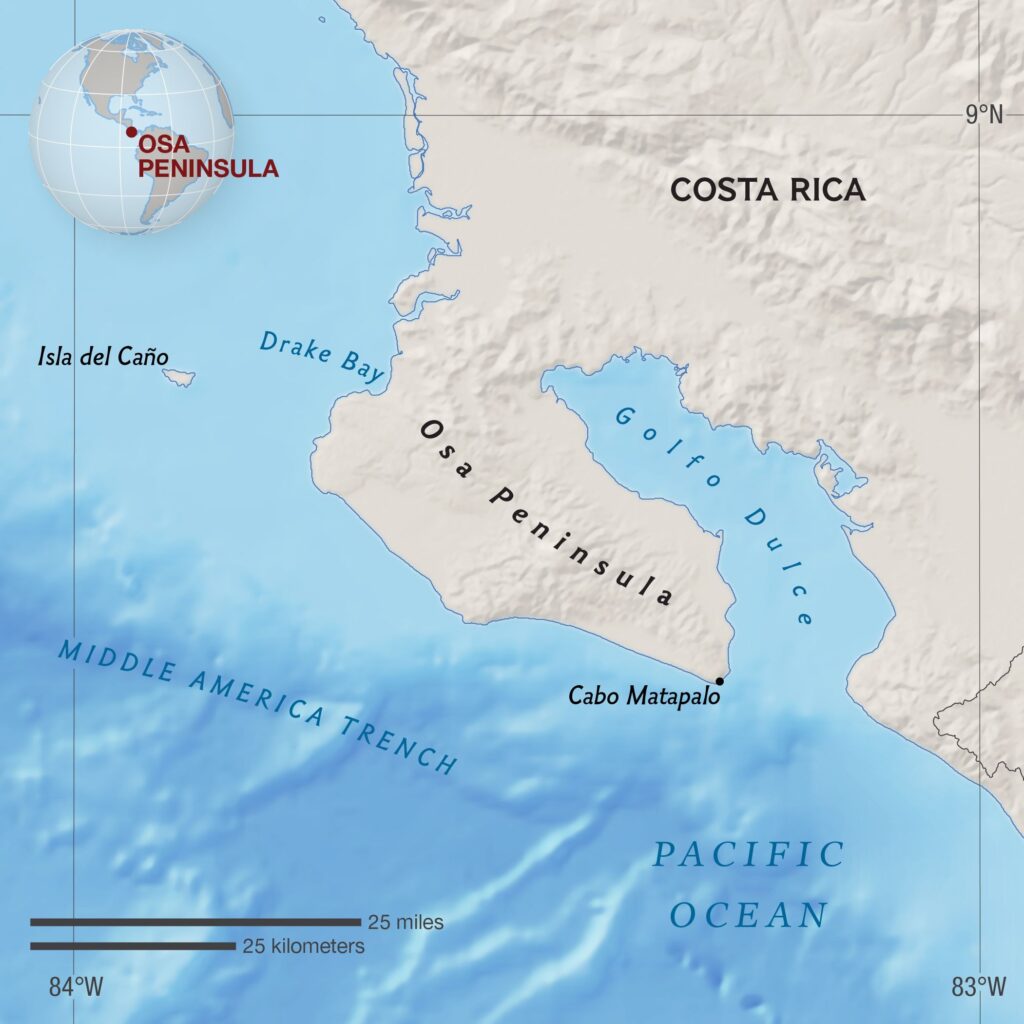Expeditions Osa Peninsula
Friday 1 March, 2019 - Author: National Geographic

THE PLACE
Located in the southwestern corner of Costa Rica, the Osa Peninsula is known for the remarkably high diversity of fauna and flora that it harbors. Once an island in the Pacific, the Osa Peninsula evolved in isolation until it merged with mainland Costa Rica two million years ago by way of the same fault line that extends to California. As one of the last places in Costa Rica to be settled, this iconic peninsula is almost entirely covered with lush primary rainforests.
With Golfo Dulce to the east, Drake Bay to the north, and the Pacific Ocean to the west, the peninsula is surrounded by waters that contain important aggregation areas for marine mammals including humpback whales, Bryde’s whales, bottlenose dolphins, and spotted dolphins. Various beaches around the peninsula also serve as nesting sites for green, Olive Ridley, hawksbill, and vulnerable leatherback sea turtles.

MAP BY NATIONAL GEOGRAPHIC SOCIETY STAFF
THE MISSION
Partnering with Osa Conservation and the University of Costa Rica, the Pristine Seas team conducted a scientific expedition to explore and document the unique and diverse marine ecosystems around the Osa Peninsula.
The expedition team traveled from Puntarenas to Isla del Caño, along the western coast of Corcovado National Park to Cabo Matapalo, and northward into Golfo Dulce, a tropical fjord that is home to an abundance of marine species, including three species of hammerhead shark. Combining dive surveys with the use of high-tech tools—such as deep sea drop-cameras, baited remote underwater video systems, and drifting pelagic cameras—the expedition team took a comprehensive look at rich marine biodiversity around the peninsula, and examined the importance of these waters for migratory species.